Imagine this: your morning begins with a routine check on the factory floor, only to find an entire production line shut down. The culprit? A tiny, overlooked vulnerability in your smart factory’s cybersecurity. By 2025, this could become the norm rather than an exception.
The rapid evolution of smart factories is unparalleled, with automation and interconnectedness leading to unprecedented efficiency. But these advancements bring a surge of cybersecurity risks that could cripple industries. Are you ready to face these looming threats?
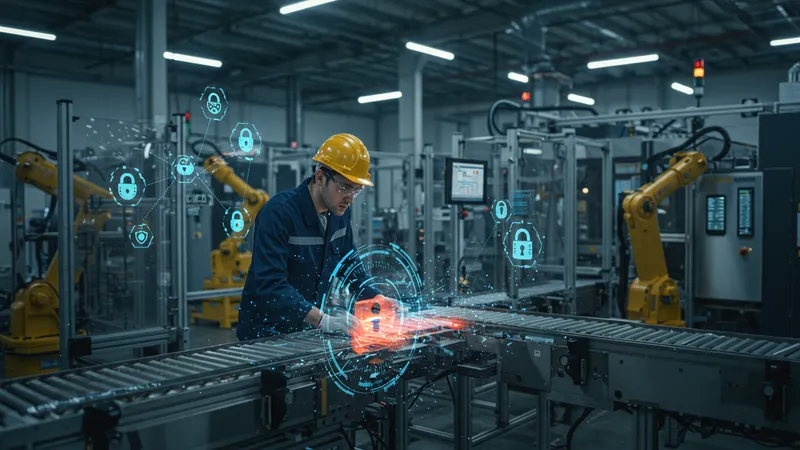
A survey conducted by a leading cybersecurity firm revealed that over 50% of smart factories experienced a significant cyberattack in the past year alone. With automation central to operations, these breaches are more than just a minor hiccup—they can halt entire production lines, leading to massive financial losses. But that’s not even the wildest part...
Consider the growing sophistication of cybercriminals, employing AI and machine learning to outsmart traditional security measures. These digital invaders are now capable of mimicking legitimate user behavior, making them harder to detect. But even the most cunning cyber thieves have vulnerabilities of their own. What happens next shocked even the experts…
AI’s infiltration into cybersecurity is a double-edged sword. While companies harness it to bolster defenses, hackers leverage it to enhance their attack repertoire. AI-powered malware can learn to adapt, rendering traditional defenses obsolete in real-time. But here’s the twist: some security systems now employ AI to predict and neutralize threats before they occur, fueling a cat-and-mouse game unlike any other.
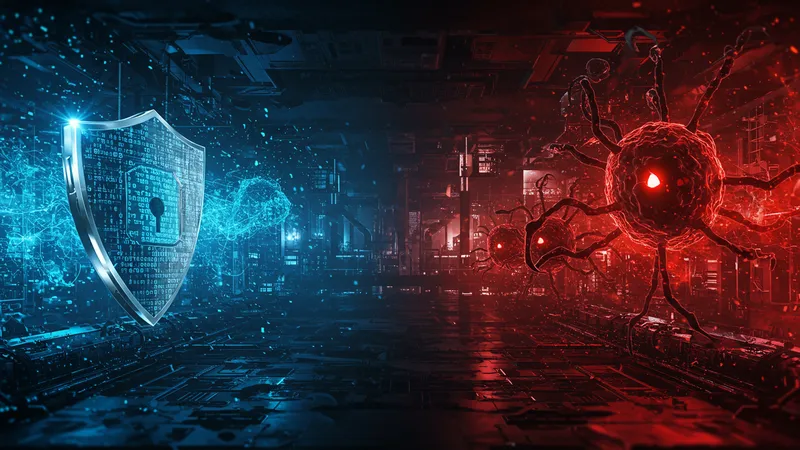
Imagine malware that evolves independently, becoming more sinister with each iteration. This is no longer science fiction but a terrifying reality. Cyber attackers use AI to clone digital twins of factory systems to test potential vulnerabilities without raising alarms. But there’s one more twist…
Counteracting these threats demands not just advanced technology but also a holistic security mindset. The key is integrating AI into security protocols while remaining vigilant against its misuse. This demands training and awareness at every level, from executives to technical staff. Without this, no technology, however advanced, can safeguard against the ghost in the machine.
Sadly, it’s not just the technology but the lack of preparedness that often results in breaches. A study reveals that while 63% of organizations acknowledge AI-based threats, only 21% have robust AI-backed security frameworks. What you read next might change how you see this forever.
Modern smart factories rely heavily on interconnected supply chains, creating a digital web ripe for exploitation. Cybercriminals are no longer attacking the fortress directly; instead, they target vulnerable links within the supply chain. This indirect approach often goes unnoticed, allowing them to infiltrate networks stealthily.

Consider a simple email from a small supplier containing malware. Once opened, it grants hackers access to a larger network. This modus operandi allows breaches to escalate quickly and covertly. The scary part? Often, these infiltration tactics remain undetected until significant damage occurs. But there’s another layer...
The consequences of supply chain attacks extend beyond immediate financial losses. They disrupt production schedules, erode customer trust, and lead to cascading contractual penalties. Organizations need to adopt rigorous supplier vetting and monitoring strategies to safeguard against these silent intrusions.
The vulnerability isn’t just external. Firms often overlook internal threats, underestimating how disgruntled employees or weak internal policies can open doors for attackers. This dual-threat perception is crucial for shielding assets and maintaining a solid security posture. And it turns out, there’s more than meets the eye.
Beyond technology, the human component is perhaps the most unpredictable yet vulnerable aspect of cybersecurity. A staggering 95% of security breaches result from human error. No matter how sophisticated the tech infrastructure, a single click on a malicious link can compromise an entire system.
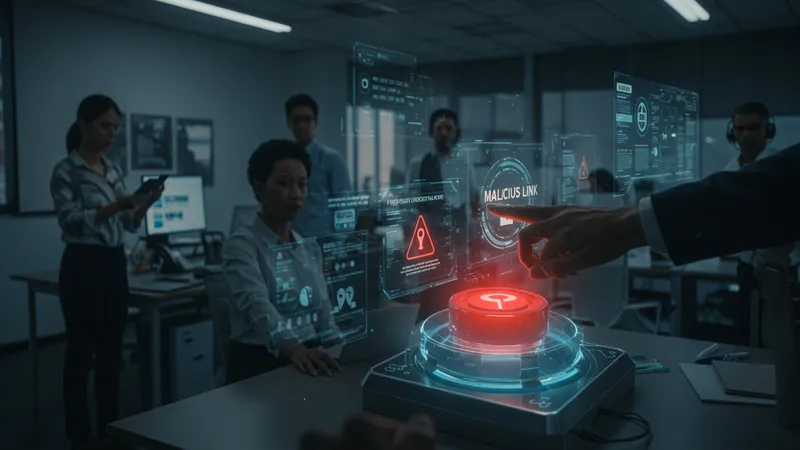
Cybersecurity training remains crucial, yet often overlooked or inadequately executed. Employees play a pivotal role in maintaining cyber hygiene, making awareness programs vital. It’s not just about avoiding mistakes but cultivating a culture of caution and alertness. But here’s where it gets more complex.
The social engineering tactics used by attackers exploit psychological triggers, tricking well-intentioned employees into divulging sensitive information. Phishing attacks are getting remarkably personalized, imitating familiar communication styles to breach defences effortlessly. But there’s more than meets the dialogue.
To fortify human defenses, companies need to establish robust incident reporting protocols that prioritize quick response when breaches occur. Open communication channels and regular simulated attack drills can significantly enhance the readiness of personnel to deal with threats as opposed to defaulting to control technologies alone. What follows is even more alarming.
As technology evolves, so must the policies governing its use. Unfortunately, many organizations are shackled by outdated cybersecurity policies that fail to address modern threats. The absence of dynamic policy updates leaves smart factories vulnerable to constantly evolving cyber risks.
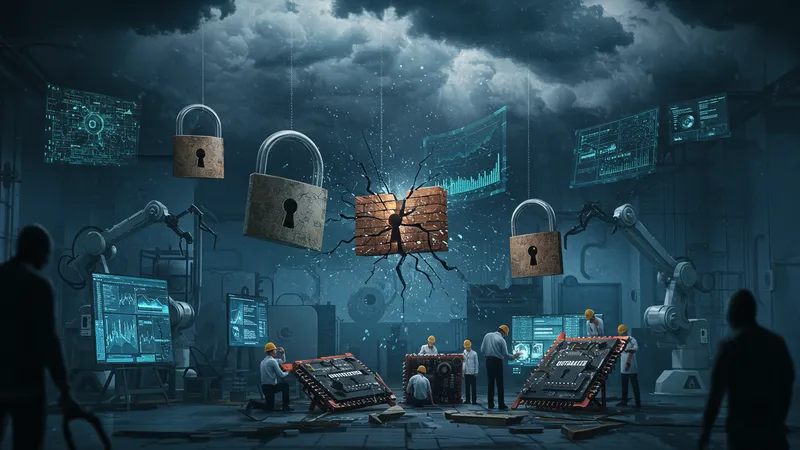
A report by cybersecurity experts reveals that 70% of companies update their cybersecurity strategies at a pace far slower than technological advancements. These static defenses can open doorways for cybercriminals to exploit overlooked gaps. It’s a harsh reminder of the gap between policy and practice.
Furthermore, legacy systems prevalent in many factories can become liabilities. These systems often lack patches or are incompatible with newer security measures, turning them into easy targets for sophisticated attackers. Without policy reform, factories can't fully leverage new technologies to defend against new threats.
Addressing these challenges requires an agile approach to cybersecurity policy development. Governance that anticipates technological shifts and fosters adaptive resilience can prevent factories from becoming cybercrime's low-hanging fruit. However, even agile policies need constant reinforcement and vigilance to remain effective. These unspoken truths reveal yet another layer below the surface.
Data is the lifeblood of smart factories, but it’s also a tempting target for cyber attackers. With factories collecting vast amounts of data, from machine performance to consumer behavior, the stakes for data security have never been higher.
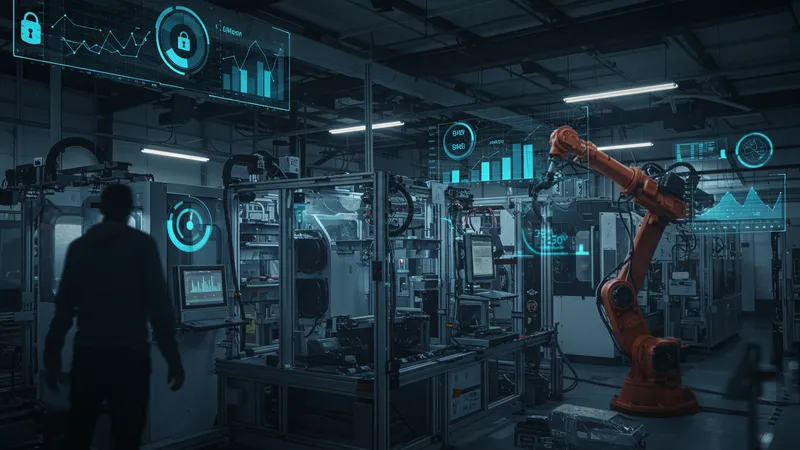
Data breaches can lead to catastrophic outcomes, including intellectual property theft and reputational damage. Cybercriminals aren't just after financial data; they're interested in strategic insights that can affect everything from price setting to product innovation. But there’s more at stake.
What many organizations fail to realize is the latent potential within inaccessible data siloes, making them susceptible to breaches. Silos disconnect systems, leading to inconsistent security measures that hackers can exploit. A cohesive data management strategy is vital for reinforcing security.
Encrypting data and implementing stringent access controls can mitigate risks, but these measures require regular updates and oversight. The battle over smart factory data is ongoing, with implications resonating far beyond the confines of the production facility. And as technology progresses, so does the challenge of keeping these digital jewels safe.
As the Internet of Things (IoT) integrates further into smart factory operations, so too does the possibility of increased attack vectors. Cybersecurity risks grow exponentially with each connected device, turning a once controllable environment into a playground for malefactors.
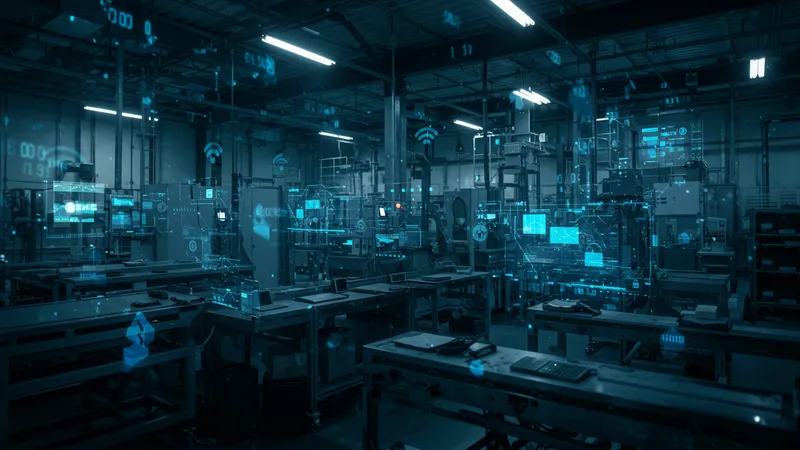
Connected devices enable more efficient processes by collecting and sharing data, but they also come with security vulnerabilities. Each IoT device can act as a potential entry point for cyberattacks, leading to widespread disruption. The sprawl of IoT demands rigorous scrutiny.
An estimated 75 billion IoT devices will exist by 2025, each amplifying potential security weaknesses. Factories must implement routine audits and fortify network policies to contain and manage these risks effectively. Sadly, this awareness is often lacking.
Adopting comprehensive IoT security solutions tailored to specific needs helps control device life cycles and updates. By integrating security at the design stage, organizations can proactively address IoT vulnerabilities. Prepare for the scale of this challenge with unprecedented rigour—and encounter ever-new complexities.
Legacy systems remain a significant cybersecurity concern within many smart factories. Often built before the digital age, these systems lack the built-in safeguards necessary for the complexities of today’s cyber landscape.
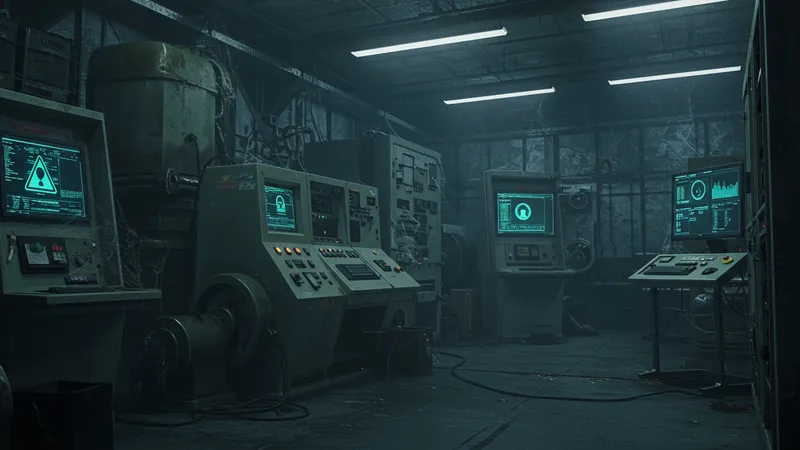
Older systems are more prone to exploitation, as they provide easy entry points for hackers seeking to infiltrate networks. Many organizations struggle with the balance between maintaining these systems and integrating them into more secure, modern frameworks. But here lies a fault line...
Retrofitting old systems with contemporary security features is not only costly but also technologically challenging, especially since some systems become incompatible with modern defenses. This predicament leaves factories in a vulnerable limbo.
Addressing these shortcomings involves strategizing a phased transition towards modern systems and ensuring regular updates and patches. The continued reliance on legacy systems, however, serves as a cautionary tale of tech complacency. Transformative insights await those prepared to challenge this inertia.
Zero Trust is an emerging concept in cybersecurity that could redefine access controls. It posits that trust is a vulnerability, advocating for meticulous verification of every access request, regardless of its source within or outside the network.
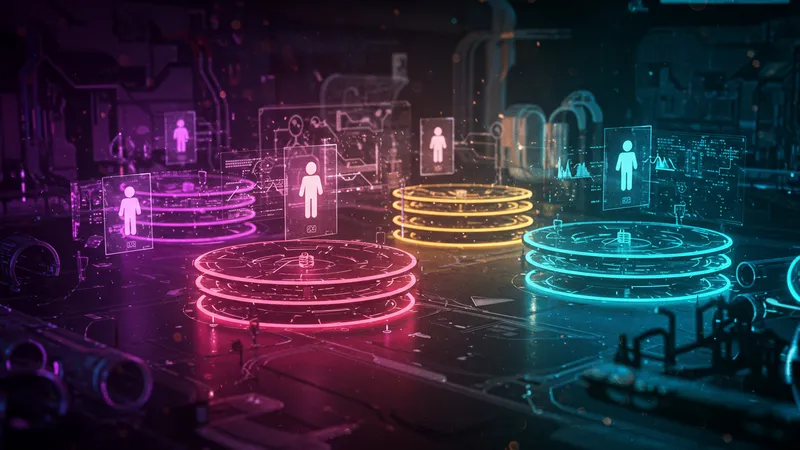
By embracing Zero Trust, smart factories can potentially limit breaches, enforcing stringent security checks at every digital intersection. This requires not merely new technologies but a cultural pivot within organizations that have long relied on perimeter defenses.
Despite its promise, implementing Zero Trust isn’t without hurdles. The shift necessitates significant investments in tech and training, putting it out of reach for smaller enterprises. Still, the payoff—a fortification of digital boundaries—is worth contemplating.
For those who dare to adopt, integrating Zero Trust into cybersecurity strategies could unlock unprecedented protective layers. Yet, the complexity and expense of implementation continue to confound many. A paradigm shift teeters on the horizon, but its full potential remains untapped for now.
The menace of ransomware is gaining new dimensions with the advancement of smart technologies. As factories become more interconnected, the havoc ransomware wreaks escalates, leading to significant operational disruptions and financial burdens.
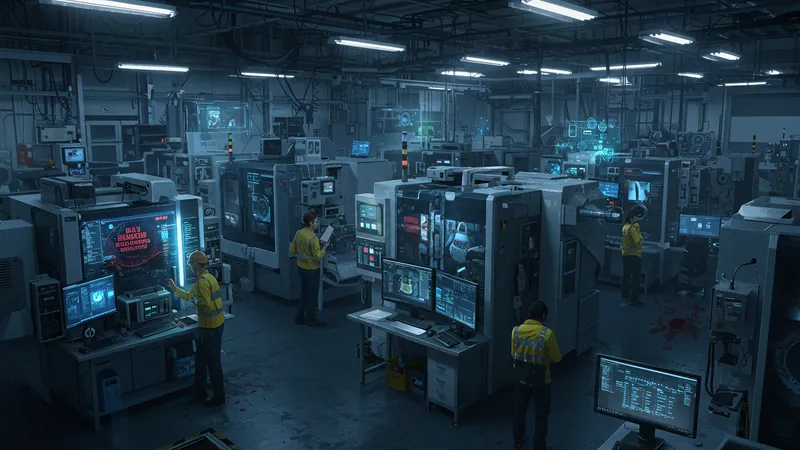
Ransomware attacks encrypt factory data, demanding payment for its release. These attacks evolve rapidly, often outpacing standard defensive measures. Industries find themselves in a precarious position, weighing the risks of paying vast sums against prolonged downtime.
Countermeasures like regular backups, diligent patch management, and employing anti-ransomware tools are crucial. But proactive measures alone don’t suffice; organizations need comprehensive response plans detailing swift action during breaches.
Understanding ransomware's evolving tactics is imperative, as these attacks may shift focus to machinery and IoT devices. This unrelenting threat's adaptability signals the necessity for continuous vigilance. Another unfolding chapter in this digital saga awaits discovery.
Creating resilience in smart factories extends beyond technological defenses; it's about instilling a culture that inherently prioritizes cybersecurity. Every individual plays a role, from the factory floor to the C-suite.
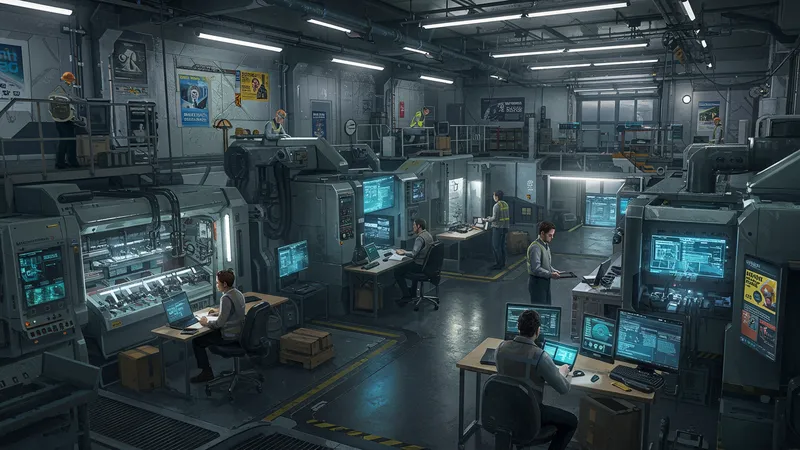
A proactive cybersecurity culture involves ongoing training and open communication regarding emerging threats. Encouraging personal responsibility and continuous learning can mitigate human errors, keeping the human firewall robust.
Collaborative security initiatives between organizations and governments offer added protection layers, fostering shared threat intelligence and best practices. However, implementing such a culture requires time, commitment, and the willingness to evolve continuously.
Ultimately, embedding cybersecurity into the corporate DNA ensures long-term resiliency. Transforming words into actions demands an unwavering dedication to foreseeing and countering cyber challenges. The intersection of technology, policy, and human insight opens a new frontier in resilience.
Cyber threats pose not just operational challenges, but significant economic risks for smart factories. As the frequency and sophistication of attacks rise, the accompanying financial toll escalates alarmingly.
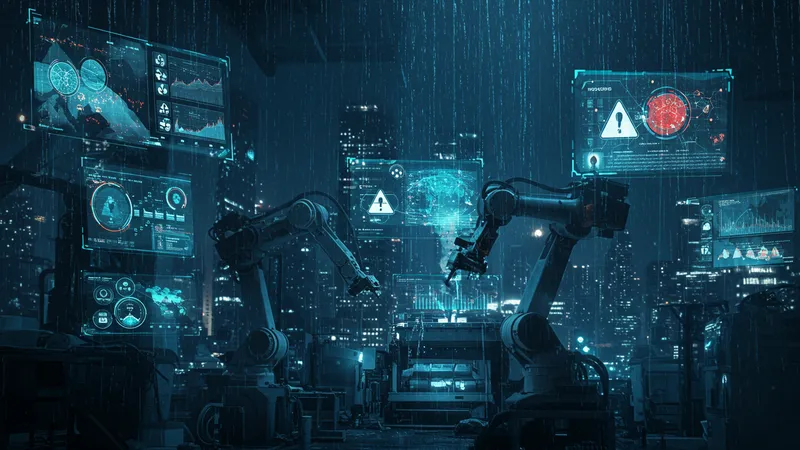
Research indicates the global cost of cybercrime will reach $10.5 trillion annually by 2025. For smart factories, the economic impact encompasses lost revenue, reputational damage, and substantial recovery costs, influencing competitiveness.
Investing in cybersecurity should be viewed as an economic imperative, not merely a technological necessity. Allocating resources towards robust defenses and insurance against potential breaches can mitigate future economic damage.
The broader economic implications extend to supply chain partners and clients, amplifying the reach of a successful cyberattack. Proactively addressing these concerns requires strategic foresight and rigorous financial planning. The dynamics at play echo a global call to action.
Governments worldwide are intensifying efforts to regulate cybersecurity within industries, including smart factories. Regulatory compliance is essential, yet navigating these guidelines creates challenges in balancing innovative flexibility with stringent security standards.
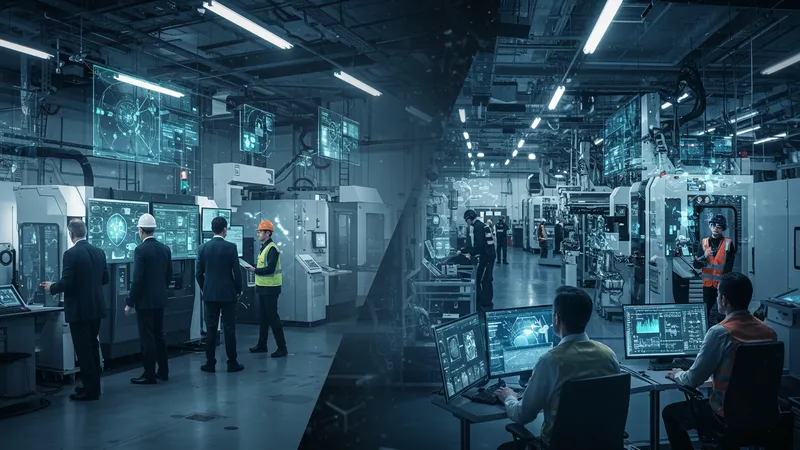
New policies aim to close vulnerabilities, mandating stricter controls to safeguard national infrastructures. But while security is paramount, enforcing compliance can stifle innovation if not carefully balanced with industrial autonomy.
Engaging policymakers can offer industries a voice in shaping regulations. Collaborating with government bodies ensures pragmatic policies that promote secure tech adoption without stifling progress.
The interplay between regulation and innovation underscores the critical need for cohesive strategies tailored to industry-specific nuances. Navigating this regulatory landscape could reshape how factories evolve in the cybersecurity era. Our story edges towards a transformative departure.
Digital twins represent arguably revolutionary potential for smart factories, simulating real-time operations to predict outcomes and optimize processes. Yet, this innovation introduces new dimensions of cyber vulnerability.
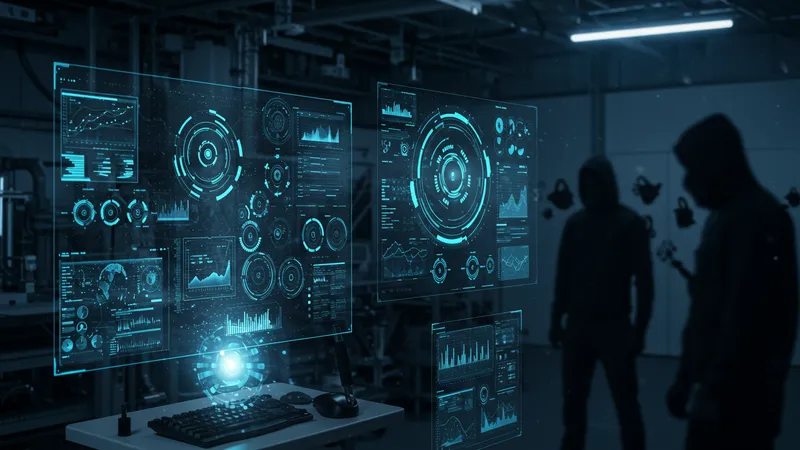
Hackers view these digital counterparts as untapped goldmines, capable of revealing insights into operational strategies and sensitive information. Safeguards are crucial to prevent unauthorized access and manipulation of digital twins.
Securing such constructs demands comprehensive end-to-end encryption and robust authentication protocols. As these virtual models grow in sophistication, guarding against cyber infiltration is paramount.
This dual nature of innovation and risk invites strategic discourse on securely leveraging digital twin technology. A creative dance of technological advancement coupled with vigilant protection sets the stage for ongoing evolution.
Cloud adoption in smart factories unlocks impressive scalability and efficiency, transforming how data is managed and processed. However, it also introduces challenges due to potential cloud-specific vulnerabilities.
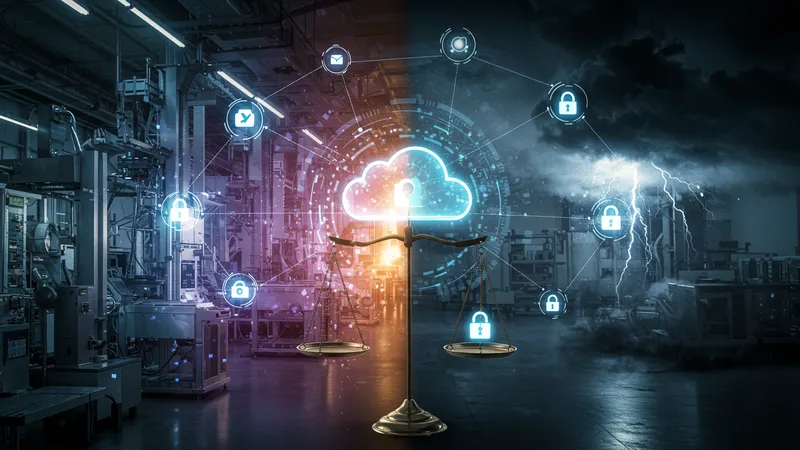
While organizations gain flexibility, they risk exposure to data breaches, unauthorized access, and service disruptions. Shared responsibility models necessitate a clearer delineation of security roles between cloud providers and users.
Developing a robust cloud strategy involves addressing these vulnerabilities through advanced encryption, routine audits, and comprehensive access management. The balance of utilizing cloud advantages against inherent risks demands skillful maneuvering.
As factories increasingly pivot towards cloud adoption, increasing dependency on cloud infrastructure exposure must be critically assessed. Contending with this complex risk-benefit calculus accentuates an industry grappling with transformative change. The closing chapters weave a narrative of decisive impact.
As we've seen, smart factories stand at a crossroads, where the promises of unprecedented efficiency meet formidable cybersecurity challenges. These threats demand action—action that extends from implementing advanced security technologies to fostering cultures of resilience and collaboration.
The future of cybersecurity in smart factories will shape industries and economies alike; it requires adapting faster than ever before to outpace malicious actors. By committing to proactive strategies and embracing innovation responsibly, factories can secure their crucial role in the digital landscape.
Don't let your factory be the next cautionary tale. Share this article and join the conversation about securing the future of manufacturing—before it’s too late. What steps will you take to unlock the promise of a safer, smarter industrial world?